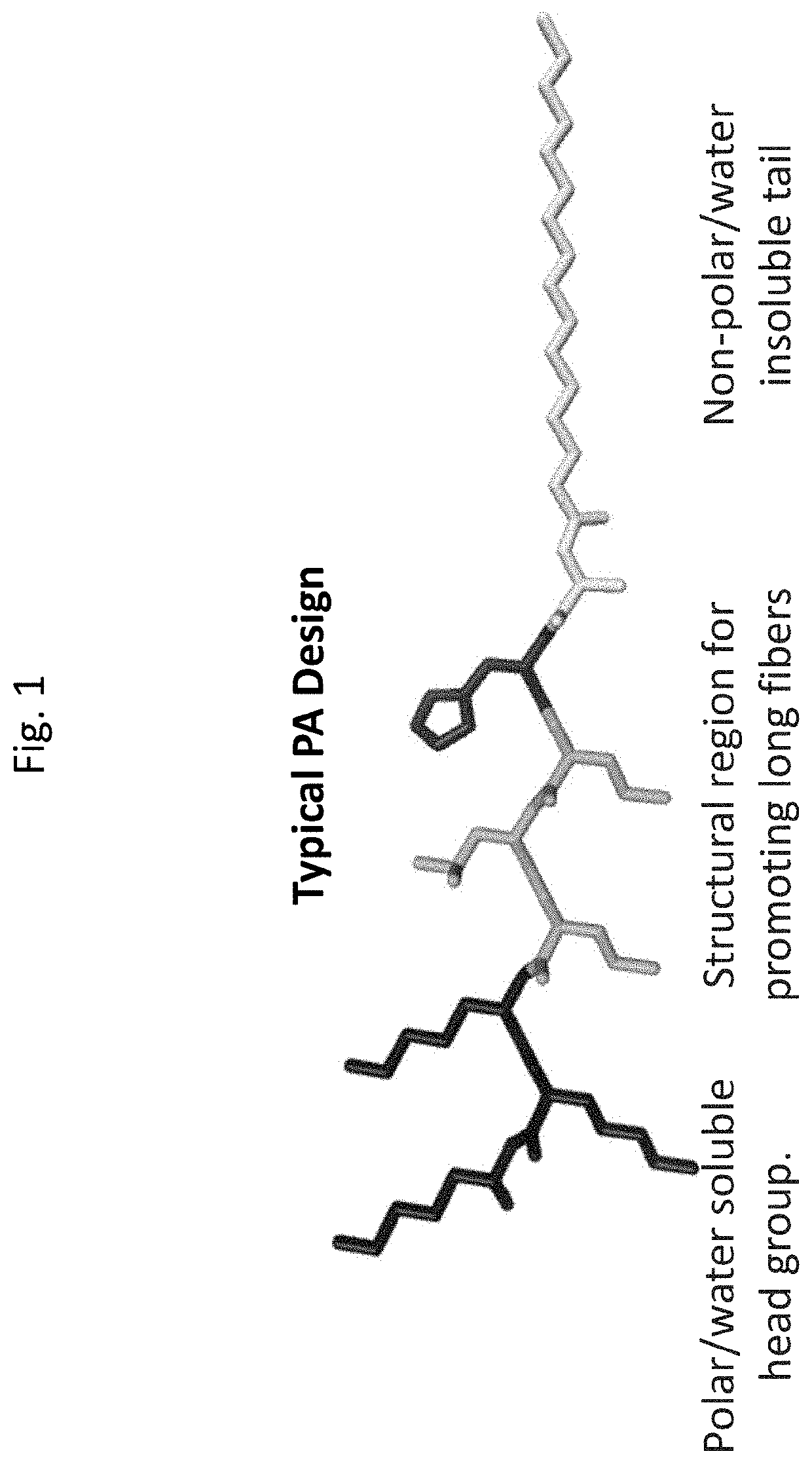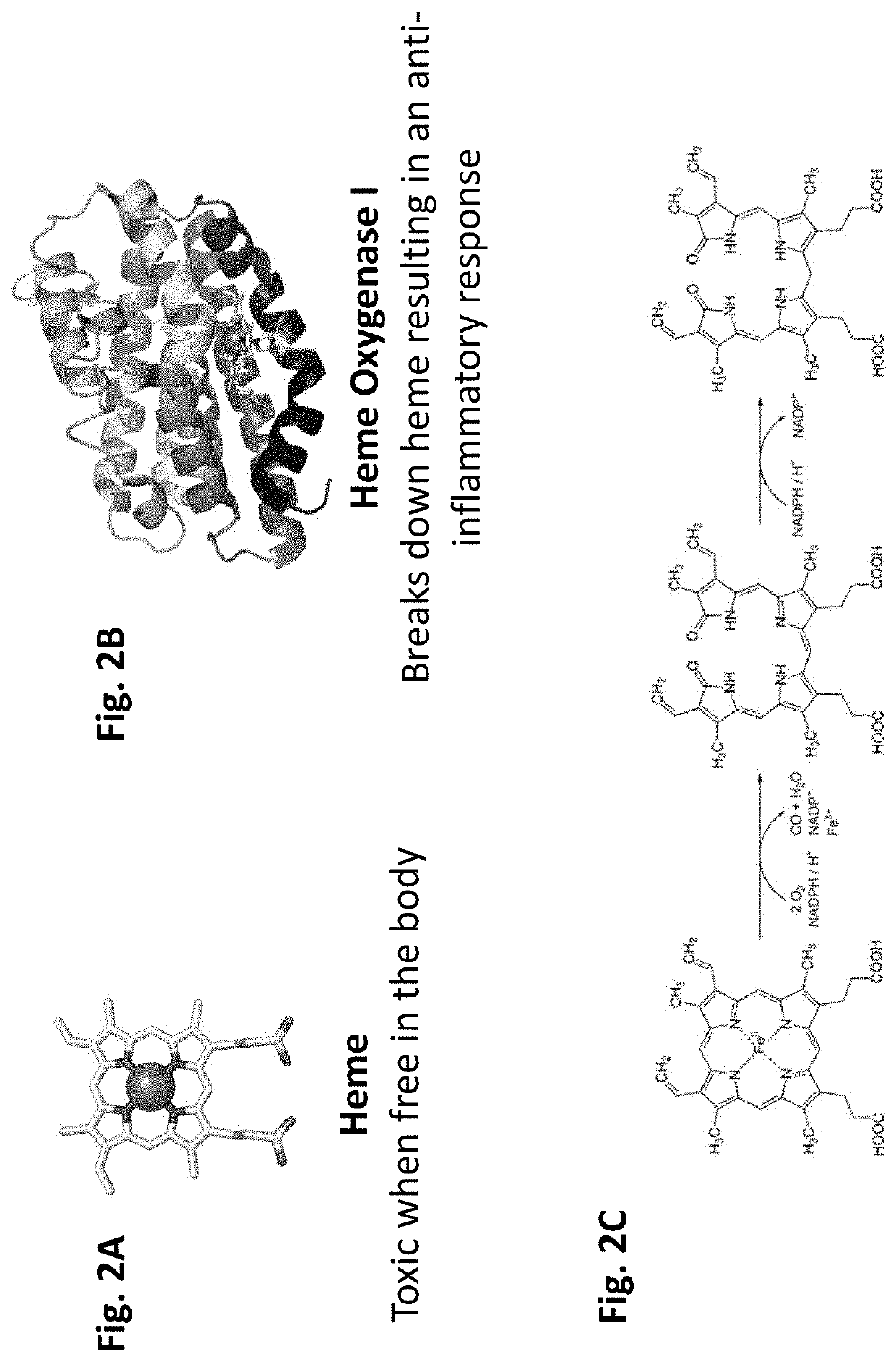Heme peptide materials for anti-inflammatory regenerative nanobiomedicine
a regenerative nanobiomedicine and heme peptide technology, applied in the direction of peptides/protein ingredients, drug compositions, peptides, etc., can solve the problems of achieving complex biological inspired reactivity in synthetic materials and hindering the efficacy of materials
- Summary
- Abstract
- Description
- Claims
- Application Information
AI Technical Summary
Benefits of technology
Problems solved by technology
Method used
Image
Examples
example 1
Peptide Synthesis
[0077]The peptide amphiphiles were designed to emulate naturally occurring heme active sites by re-producing the coordination environments (FIG. 6). The individual units all have the same sequence, which followed the simple design, c16-XHL3K3—CO2H (SEQ ID NO: 8), where X represents the amino acid that is varied in this study H is the amino acid histidine, the most common heme-binding amino acid in nature (FIG. 6). These peptide amphiphiles bind heme molecules with the designed binding site XX (AA, AH, HH, or MH) are further denoted as XX in the apo state (uncoordinated heme) or XXHeme in the holo state (coordinated heme).
[0078]For the initial design visualization, Applicants assumed the formation of parallel β-sheets, typical for amphiphiles (FIG. 6). AHHeme, is most similar in coordination to that of nitrophorin with a single histidine available for coordination (FIG. 6). The second peptide in the set is HHHeme; the bis-histidine coordination is similar to neuroglo...
example 2
In Vivo Analysis of Peptide Function
[0105]The peptide amphiphiles prepared according to Example 1 are tested for efficacy and their pharmacokinetic profile in the murine models along the lines described in (58) (an anti-tumor model), (59) (an anti-inflammatory model), or (60) (an angiogenesis model).
PUM
| Property | Measurement | Unit |
|---|---|---|
| pH | aaaaa | aaaaa |
| pH | aaaaa | aaaaa |
| pH | aaaaa | aaaaa |
Abstract
Description
Claims
Application Information
 Login to View More
Login to View More - R&D
- Intellectual Property
- Life Sciences
- Materials
- Tech Scout
- Unparalleled Data Quality
- Higher Quality Content
- 60% Fewer Hallucinations
Browse by: Latest US Patents, China's latest patents, Technical Efficacy Thesaurus, Application Domain, Technology Topic, Popular Technical Reports.
© 2025 PatSnap. All rights reserved.Legal|Privacy policy|Modern Slavery Act Transparency Statement|Sitemap|About US| Contact US: help@patsnap.com



